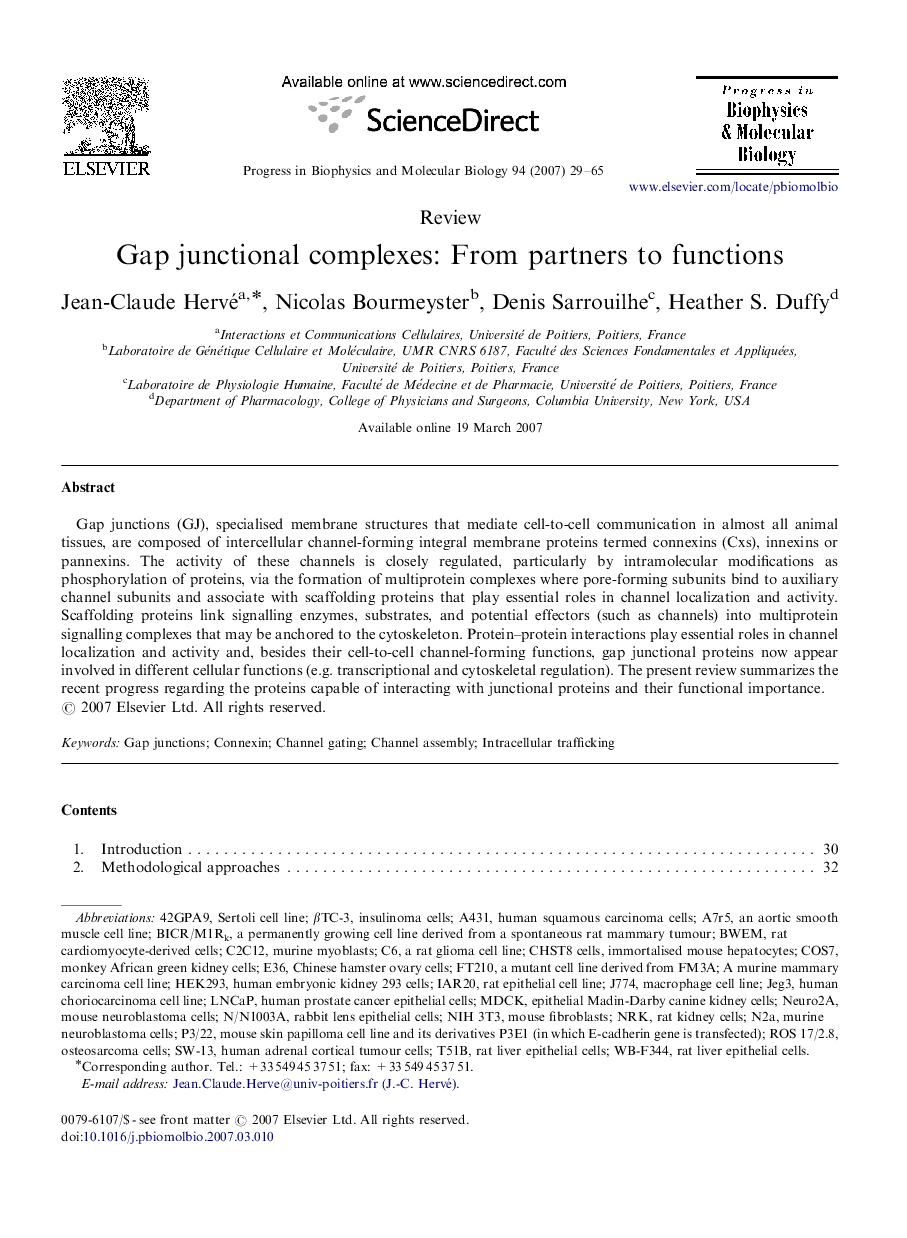| Article ID | Journal | Published Year | Pages | File Type |
|---|---|---|---|---|
| 2070642 | Progress in Biophysics and Molecular Biology | 2007 | 37 Pages |
Gap junctions (GJ), specialised membrane structures that mediate cell-to-cell communication in almost all animal tissues, are composed of intercellular channel-forming integral membrane proteins termed connexins (Cxs), innexins or pannexins. The activity of these channels is closely regulated, particularly by intramolecular modifications as phosphorylation of proteins, via the formation of multiprotein complexes where pore-forming subunits bind to auxiliary channel subunits and associate with scaffolding proteins that play essential roles in channel localization and activity. Scaffolding proteins link signalling enzymes, substrates, and potential effectors (such as channels) into multiprotein signalling complexes that may be anchored to the cytoskeleton. Protein–protein interactions play essential roles in channel localization and activity and, besides their cell-to-cell channel-forming functions, gap junctional proteins now appear involved in different cellular functions (e.g. transcriptional and cytoskeletal regulation). The present review summarizes the recent progress regarding the proteins capable of interacting with junctional proteins and their functional importance.
